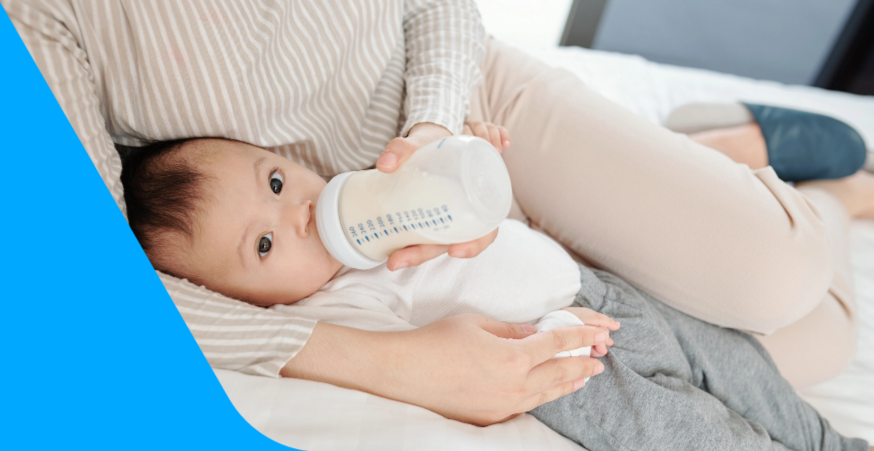Bottle-feeding sounds simple, but there is more to it than simply pouring formula or breast milk into a bottle. To make sure that you and your baby enjoy a safe, comfortable, and successful bottle-feeding session, follow these nine must-know bottle-feeding tips from Enfamil®:
Start clean.
Beforehand, sterilize your baby bottles by washing them thoroughly with soap and water, then allow the separated baby bottles and nipples to sit in boiling water for 2 minutes. Have the sterilized baby bottles drip dry on a dish rack. Wash your hands thoroughly with soap and water before preparing formula or beginning a bottle-feeding session with your hungry baby.
Measure carefully.
Be mindful about measurements; you can upset your baby’s digestive system or cause her to miss out on key nutrients if you feed her the wrong amount. Whether you’re using ready-to-feed, liquid concentrate, or powdered formula, carefully read and follow the label instructions. To find the right formula for your infant, be sure to visit our formula finder page.
Skip the microwave.
Using a microwave to heat baby bottles of formula creates uneven hot spots that can seriously burn your baby’s mouth. Instead, immerse the baby bottle in a pot of warm water until it’s lukewarm, then check the temperature before feeding it to your baby.
Set the scene.
Select a quiet, comfy spot with no distractions and hold your baby in a semi-upright position to make swallowing easier. A great feeding position is to cradle your baby on top of a pillow placed in your lap.
Get cozy.
Just like breastfeeding, bottle-feeding provides your baby with warmth, comfort, and skin-to-skin contact. Hold your baby on your lap with his head resting in the bend of your arm. Keep him in a semi-seated position, with his head slightly higher than his tummy. Focus on your little one during feedings and enjoy your time together – this is your time to talk, sing, and cuddle to your heart’s content.
Take burping breaks.
Most babies need to be burped after they eat. Because bottle-fed and breast-fed babies sometimes swallow more air, taking burp breaks after every two to three ounces of formula can help them be more comfortable. You can also try to tilt the bottle so that the nipple stays full. That way, your baby won't swallow as much air.
Watch for cues.
Your baby will let you know when she’s hungry by opening her mouth, sucking her hand, or squirming while waiting for a bottle. When she’s full, she’ll release the nipple or fall asleep.
Try supplementing breastfeeding with formula feeding.
Although experts recommend you exclusively breastfeed your baby for the first six months, you may later choose to supplement breast milk with baby formula. Formula can provide extra nutrition when necessary, allows you to share feeding duties, and helps when you’re returning to work.
Ask for help.
Don’t be afraid to ask for help if you need a break or if you want to share the feeding experience. The great thing about bottle-feeding is that your partner, parents, or other caregivers can feed baby, too.
Are you interested in more bottle-feeding tips? Call (877) 711-8901 and speak with one of our live operators Monday – Friday (9am – 5pm EST) or contact us online anytime for bottle-feeding advice.






